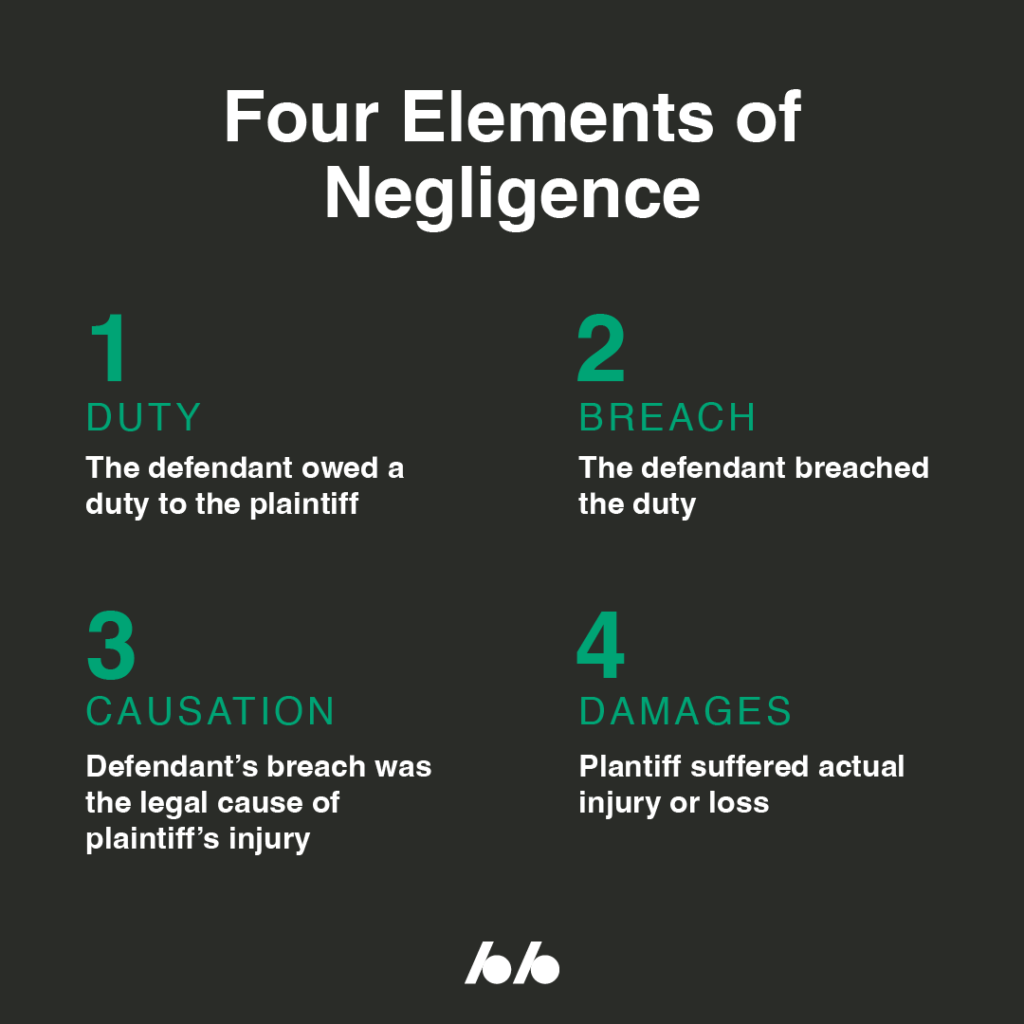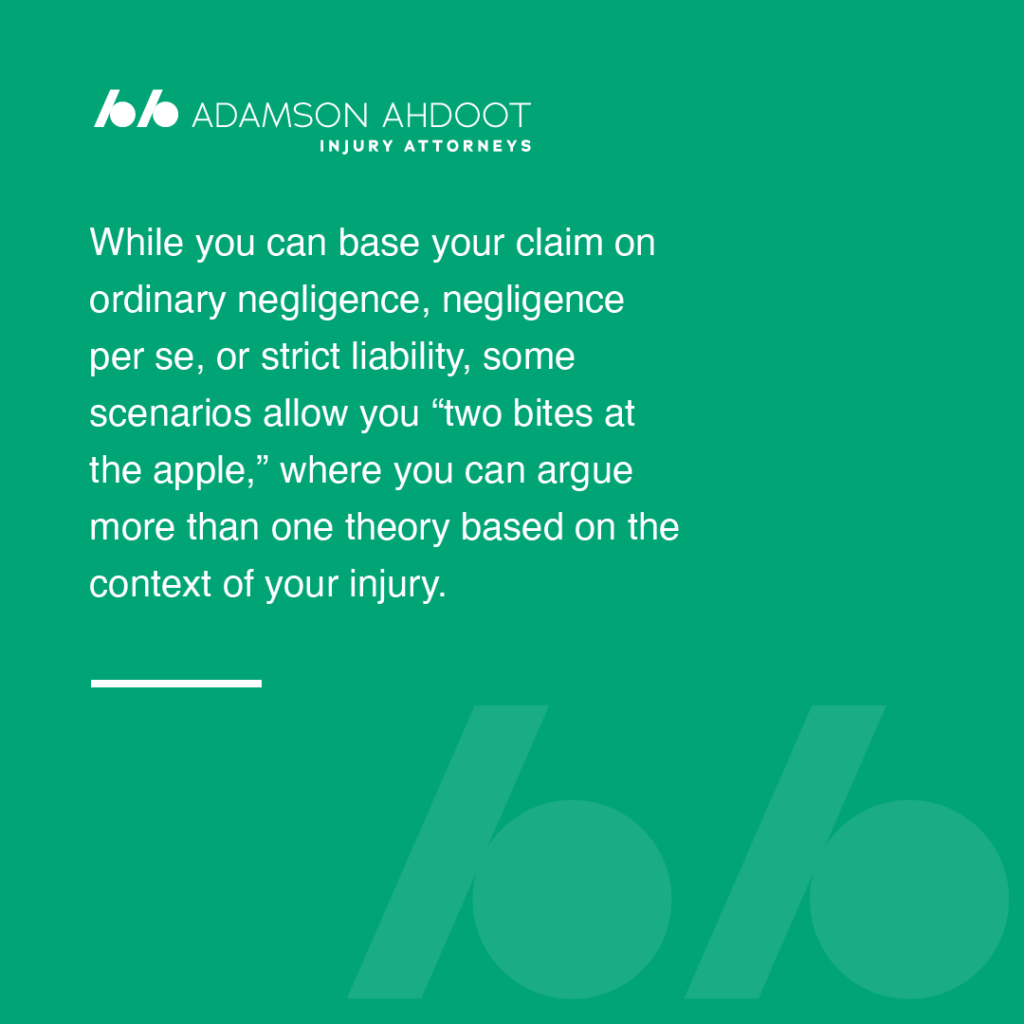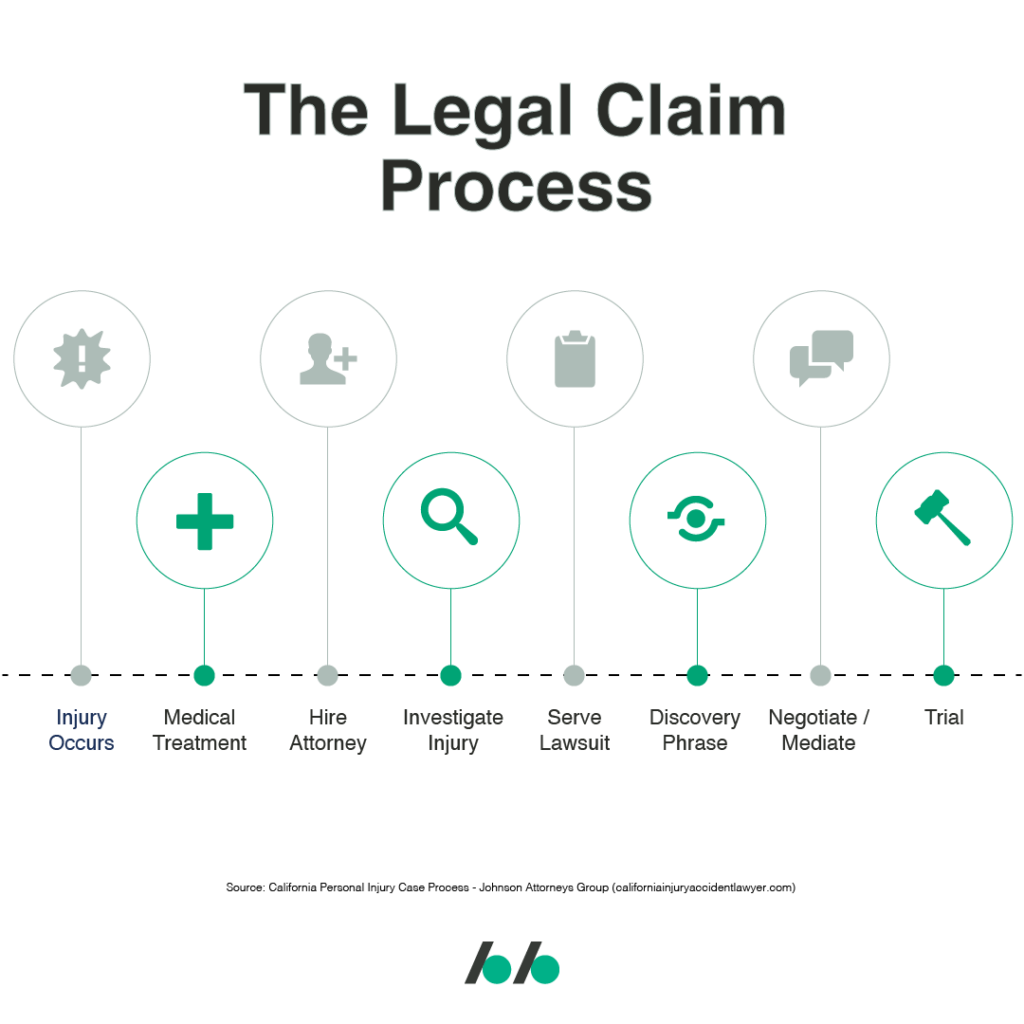The term “negligence” encapsulates a wide range of legal claims, from medical malpractice to auto collisions to workplace accidents. But how do you file a negligence lawsuit for a personal injury caused by someone else?
This explains how to win a negligence case by proving the four elements of a negligence suit in Arizona, how damages are calculated, and the defenses a defendant may assert.
If you have been injured through the negligence of someone else, a Arizona attorney may be able to help.
To bring a general negligence cause of action in Arizona, you must prove four elements: (1) that a duty existed, (2) that the duty was breached, (3) and that the breach caused (4) damages.

This is true no matter the type of negligence suit asserted, whether (1) ordinary negligence, (2) negligence per se, or (3) strict liability.
Common examples of negligence leading to personal injuries include:
The car accident scenario below describes the “ordinary negligence” situation and the latter theories that follow.
Scenario 1: Jack is driving down Main Street and Saniya is driving down First Avenue. Each road intersects the other at a four-way intersection with stop signs. Saniya approaches the stop sign, stops, and proceeds into the intersection after checking for oncoming traffic. Jack, however, misses the stop sign and careens into Saniya, who suffers whiplash, a broken arm, and property damage to her car.
First, Saniya must prove that Jack owed her a duty of care to act as a reasonably prudent person would under the same or similar circumstances. The key, however, is that the plaintiff’s (Saniya’s) injury must have been “reasonably foreseeable” to the defendant (Jack).
However, there are other circumstances where a heightened duty exists. For example, a “special relationship” exists where a person has an “affirmative duty” to protect or “come to the aid” of someone else. This typically exists in the parent-child relationship, between spouses, and in certain contractual relationships.
Jack and Saniya are strangers here, so no special relationship exists.
Scenario 1.1: Jack and Saniya are members of the public using public roads. In this circumstance, each owed the other a duty of reasonable care to operate their cars as a reasonably prudent person would.
Now that Saniya has established that Jack owed her a duty, she must next prove that he breached that duty. A breach is simply a failure by the defendant to act with the appropriate level of care.
Scenario 1.2: Here, Jack failed to stop at the stop sign and plowed through the intersection into Saniya. Therefore, he definitely breached his duty to drive carefully.
To prove causation, the plaintiff must show a definite connection between the defendant’s breach and the plaintiff’s injury. Under Arizona law, the plaintiff must show that the defendant’s misconduct was a substantial factor contributing to their injuries in a concrete and non-trivial manner.
Scenario 1.3: Saniya must show that Jack’s breach was a substantial factor in causing her injuries. Here, it is clear that if it had not been for Jack’s carelessness, Saniya would not have been injured.
Finally, Saniya must prove that Jack’s breach caused her damage. Arizona negligence law intends to restore the plaintiff to her pre-injury position by awarding compensation for losses. While purely economic losses are not compensable, Arizona law will compensate for personal injuries and/or property damage. These damages may be tangible or intangible.
Tangible damages include:
Intangible damages include:
But how are these damages valued? A jury will consider the evidence and ascribe a reasonable value to the above types of damages.
Your damages must be related to your personal injury or property damage – purely economic losses are not recoverable!
Scenario 1.4(a): We know Saniya suffered whiplash, broke her arm, and totaled her car. This means she can bring a claim for her current and future medical expenses, the cost of replacing her car, and psychological factors like emotional and mental distress. If she’s married, her husband has a claim for loss of consortium.
What happens when a plaintiff contributes to her own injuries?
Arizona’s pure comparative negligence doctrine means that the degree to which a plaintiff caused her own injuries may be ascribed a value by a jury and deducted from the overall amount she may recover from the defendant.
Scenario 1.4(b): Using our original example, imagine Saniya had moved her gaze to her car’s radio while driving into the intersection. Arizona’s pure comparative negligence statute allows the jury to split the recovery. Imagine the jury attributed 30% of the fault to her. This means that if the jury found the overall damages to be $100,000, she could only recover 70%, or $70,000, of the total from Jack.
Scenario 1 above describes the ordinary negligence case, where an individual simply owes a duty to exercise reasonable care. But two other types of responsibility exist. In either of these scenarios, the plaintiff may be able to recover greater damages to compensate for the defendant’s worse behavior.
A defendant exhibits gross negligence by an extreme departure from what a reasonable person would do.
Scenario 2.1: Still considering the car wreck above. But now, assume Jack is standing on a bridge throwing bowling balls over the side. While Saniya drives her car beneath, Jack drops a bowling ball that hits her car and causes severe head trauma. Jack has undoubtedly taken an extreme departure from reasonable behavior.
Similarly, the defendant may also exhibit recklessness or willful and wanton negligence. This occurs where the defendant did not intend to cause harm but knew or should have known that his unreasonable conduct is highly likely to injure others.
Scenario 2.2: Again, consider Jack and Saniya in the original example. Imagine Jack was driving drunk. He may not have intended to crash into Saniya, but he should have known of a high likelihood that his drunkenness would cause him to hurt someone else.
Winning a negligence suit based on the defendant’s gross negligence or recklessness/willful and wanton conduct allows you to pursue higher damages called punitives.
Besides the ordinary case, a plaintiff may also bring a suit for negligence under a theory of negligence per se or strict liability. In some cases, a plaintiff could even bring a negligence suit under multiple theories. Think of each theory as a separate opportunity to prove your case.
Just like with ordinary negligence, however, the plaintiff must still prove duty, breach, causation, and harm. Negligence per se and strict liability simply help in proving duty and breach.
A plaintiff may argue negligence per se where a statute imposes a duty as a matter of law. In such a situation, violation of the statute is per se evidence of a breach of the duty owed. However, the plaintiff still must prove that she was included in the class of people the statute intended to protect.
Again, let’s use the example of Jack and Saniya.
Scenario 3.1: Recall that Jack ran the stop sign when he crashed into Saniya. Traffic laws require that all cars must come to a complete stop at stop signs before proceeding. Because Jack failed to do so, he is per se negligent. Saniya, as a driver on the public roads, was within the required class. Therefore, she can also bring a claim under a theory of negligence per see.
Strict liability, on the other hand, applies where a defendant:
While negligence based on a defective product is beyond the scope of this guide, suppose a defendant is performing an inherently dangerous activity. That defendant is strictly liable for any harms occurring within the foreseeable consequences of that activity.
Scenario 3.2: Barb is lighting fireworks to celebrate her birthday. Jorge walks past when a lit firework bends from its placeholder and shoots him in the head. Because lighting fireworks is an inherently dangerous activity, Jorge has a strong case that Barb is strictly liable.

For example, take the fireworks example above. In Barb’s hometown, the law says that it’s illegal to light fireworks capable of reaching 50 feet within city limits. Provided that this law was intended to prevent injury, Jorge could argue that Barb committed (1) ordinary negligence by failing to use reasonable care and (2) negligence per se by violating the statute. This way, Jorge can argue negligence under both theories. The key is that he only needs to prove one theory of negligence to win.
There are several common defenses to negligence in Arizona. These include that the:
In essence, these defenses aim to remove one of the four required elements. Remember, if the defendant can prove that either duty, breach, causation, or damages did not occur, then he can defeat your case.

Once you’ve decided that it’s appropriate to bring a negligence suit under Arizona law, you have options. However, the Arizona negligence statute of limitations requires you to file suit within two years. This means that once the incident giving rise to your personal injury occurs, you have two years from that point to file your claim in court.
If you think you might have a claim for injuries sustained through someone else’s negligent actions, let the aggressive and attentive injury attorneys at Top’s Injury Law Group guide your next steps.